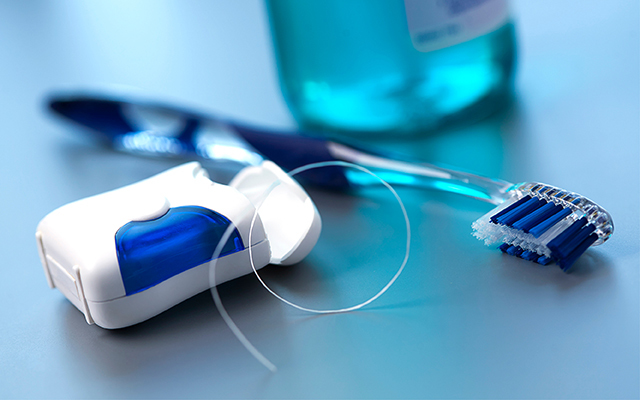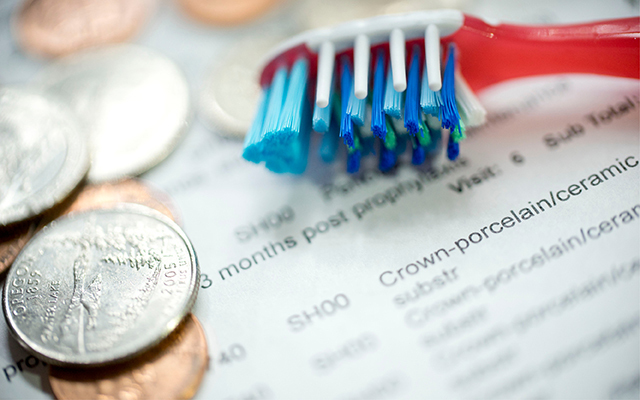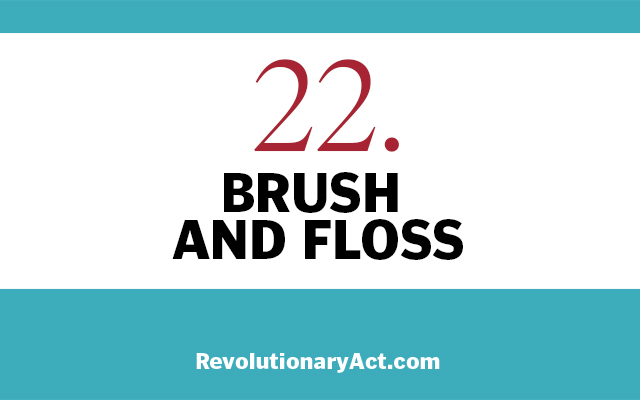The way we think about oral hygiene has come a long way since my grade-school days in the fifties, when a trip to our family dentist inevitably included a lecture about eating too many sweets and brushing with insufficient vigor (flossing had not yet been invented). By the time Dr. Larson completed his muscular drilling and mercurial filling and Mom and I were heading home on the bus, I was always left with a singular thought: How can I avoid this punishment in the future?
You would think that an 8-year-old with a low pain threshold wouldn’t need much incentive to elevate his dental care after all the shame and misery visited upon him by his demonic dentist, but by the time the Novocaine wore off, I’d blocked it all out and headed for the cookie jar. Who needs good teeth, anyway? I figured. Dad seemed to be getting along just fine with his dentures; every time he popped them out of his mouth at suppertime, it always got a laugh.
It took years — decades really — before I stumbled upon a dentist who could explain to me why a mouthful of bad teeth and flimsy gums is no laughing matter. And recent research continues to corroborate his opinion. Last August, for instance, a University at Buffalo survey of more than 65,000 older women revealed a link between periodontal disease and cancer — especially breast cancer. And last week, two other studies suggested an association between gum disease and lung, colorectal, and pancreatic cancer.
Researchers at Tufts University and Johns Hopkins followed nearly 7,500 participants in the Atherosclerosis Risk in Communities (ARIC) study for more than a decade and reported that those with severe periodontitis had more than double the chance of developing lung cancer compared with those with mild or no gum disease. Toothless study subjects (more common than you might think here in Geezerville) saw an 80 percent increased risk of colorectal cancer than their more toothsome counterparts. The risk of pancreatic cancer was smaller, but noteworthy, the study reported.
Meanwhile, University of Helsinki researchers last week published a study involving 70,000 Finns over a 10-year period that explained how a specific bacteria associated with periodontitis, Treponema denticola (Td), may trigger an outbreak of cancer cells. They found that Td’s “primary virulence factor,” an enzyme called Td-CTLP proteinase, was also active in malignant tumors found in the gastrointestinal tract. Td-CTLP had been shown in earlier studies to activate enzymes that cancer cells use to invade healthy tissue while suppressing the immune system.
“These studies have demonstrated for the first time that the virulence factors of the central pathogenic bacteria underlying gum disease are able to spread from the mouth to other parts of the body, most likely in conjunction with the bacteria, and take part in central mechanisms of tissue destruction related to cancer,” said lead study author Timo Sorsa, PhD, in a statement released by the university.
I’m not a big proponent of fear-based public-health initiatives, but the whole oral hygiene–cancer connection raises some real issues among the senior set. As I reported last year, a quarter of all Americans over 75 are toothless and one in five over 65 is chewing on untreated cavities. I doubt that all these geezers are avoiding the dentist because of some vague childhood memories of dental-related discomfort. Even the most routine teeth-cleaning is expensive, and Medicare doesn’t cover the cost.
I don’t know how any retiree could even afford the preventive treatment I’ve undergone to stabilize my own periodontitis these past several years. Every three months, I’m in the dentist chair getting my teeth and gums cleaned. It’s kept the disease at bay so far, but each visit costs about $200. It’s a small price to pay to avoid gum surgery (my main incentive) and the disease’s potential cancer-causing consequences, but it’s not cheap.
I’m fortunate enough to be gainfully employed and covered by dental insurance, which allows me to shoulder that burden without too much difficulty, but any major reconstruction work is another story. During my visit last week, for example, my dentist recommended that I replace the bridge that Dr. Larson installed after I knocked out three teeth in a bicycle crash nearly 40 years ago. “These things are supposed to last for 15 years,” he said.
It seemed like a reasonable suggestion until I saw the price tag: About $6,300.
Insurance might knock that down into the range of five grand, I’m told, but the more I think about it the more I’m coming around to the idea that Dr. Larson might have been a pretty decent dentist after all.




This Post Has 0 Comments